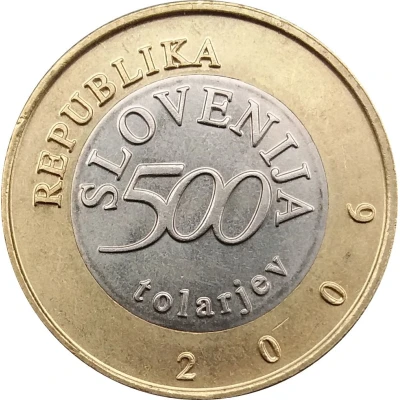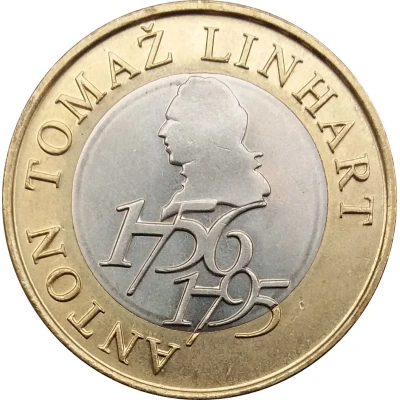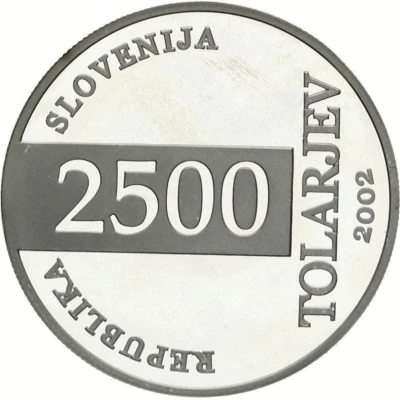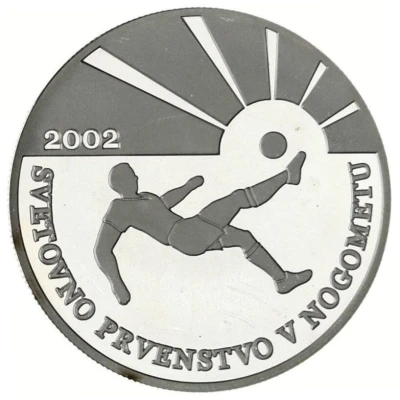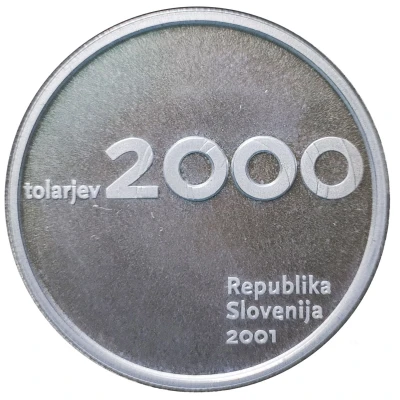
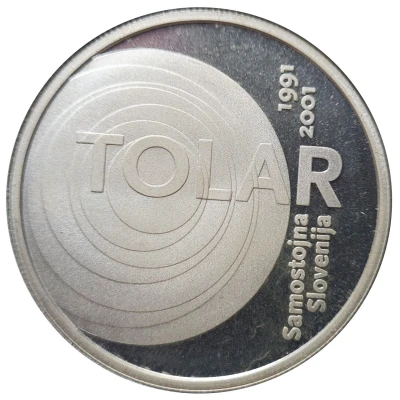

© papilio (CC BY-NC-SA)
2000 Tolarjev Slovenia and the Tolar Anniversary
2001 year| Silver (.925) | 15 g | 32 mm |
| Issuer | Slovenia |
|---|---|
| Period | Republic (1991-date) |
| Type | Non-circulating coin |
| Year | 2001 |
| Value | 2000 Tolarjev (2000 SIT) |
| Currency | Tolar (1991-2006) |
| Composition | Silver (.925) |
| Weight | 15 g |
| Diameter | 32 mm |
| Shape | Round |
| Technique | Milled |
| Orientation | Medal alignment ↑↑ |
| Demonetized | 15 January 2007 |
| Updated | 2024-10-07 |
| Numista | N#24834 |
|---|---|
| Rarity index | 89% |
Reverse
Three rings and inscription
Script: Latin
Lettering:
TOLAR
1991
2001
Samostojna
Slovenija
Designers: Matevž Čelik, Domen Fras, Vasja Semolič
Edge
200 reeds.
Comment
Following the adoption of the Constitutional Act on the Independence of Slovenia, there was a plebiscite held on December 23, 1990 by which 88.5% of the eligible voters voted for the independence of Slovenia. Complying with the Act on the Plebiscite, the independence had to be gained within 6 months.On June 25, 1991 the Assembly of the Republic of Slovenia adopted the Fundamental Charter on the Independence and the Sovereignty of Slovenia. Thus the Republic of Slovenia became an independent state. On December 23, 1991 the first State’s Constitution of the Republic of Slovenia was adopted.
In addition to adopting the Fundamental Charter, the Assembly of the Republic of Slovenia adopted a number of Independence Acts on June 25, 1991. The Bank of Slovenia became a central bank of the Republic of Slovenia by means of the Act on the Bank of Slovenia, and it was, inter alia, authorised to issue bank notes and to put bank notes and coins in circulation.
For the purpose of introducing the Slovenian currency, the Assembly of the Republic of Slovenia adopted two important Acts on October 8, 1991: the Law on Monetary Unit in the Republic of Slovenia, appointing the Tolar to be the Slovenian currency, and the Law on Use of Monetary Unit of the Republic of Slovenia, appointing the Tolar as the only legal tender in Slovenia. And if both money and language are a means of communication, the Tolar is a significant national symbol as well.
On the 10th Anniversary of the Republic of Slovenia and the Tolar – the Currency of the Independent Republic of Slovenia, the Republic of Slovenia hereby issues the anniversary coins. Their form conforms to the “heads and tails” principle. The obverse (“heads” – the message of an issuer) can symbolically represent annual rings by its circles and illustrate the growth, the vitality and the greater and greater power of the independent Slovenian currency, as well as representing the undulation of water in a fountain into which a coin has been thrown. The letter “R” to the right hand side sensibly complements the “Independent Slovenia” inscription and signifies the state order acronym, introduced together with the introduction of the independent currency. The reverse (“tails”) shows the nominal value, the name of the coin issuer and the year of the issue.
Accessed at: https://www.bsi.si/en/banknotes-and-coins/slovenian-tolar/commemorative-editions-republic-of-slovenia/10th-anniversary-of-the-republic-of-slovenia-and-the-tolar-the-currency-of-the-independent-republic-of-slovenia
Interesting fact
The 2000 Tolarjev coin from Slovenia features a unique design that showcases the country's cultural heritage. The obverse side of the coin depicts the Tolarjev family, who were prominent figures in Slovenian history, while the reverse side features a traditional Slovenian folk motif. This coin is not only a beautiful collector's item but also a symbol of Slovenia's rich history and cultural identity.
Price
| Date | Mintage | VG | F | VF | XF | AU | UNC |
|---|---|---|---|---|---|---|---|
| 2001 | 3000 | - | - | - | - | - | - |
Values in the table are based on evaluations by sales realized on Internet platforms. They serve as an indication only for 2000 Tolarjev (Slovenia and the Tolar Anniversary) 2001 coin.
